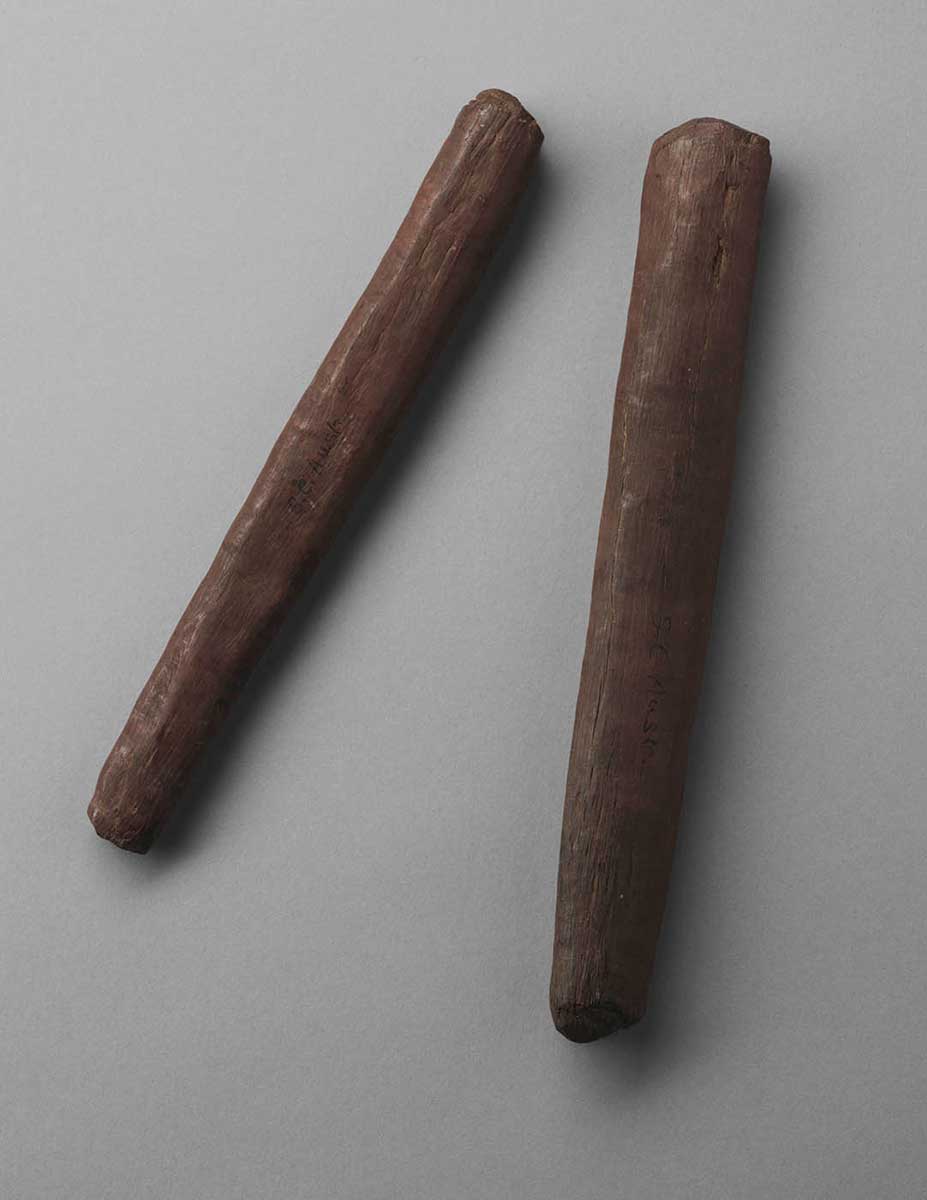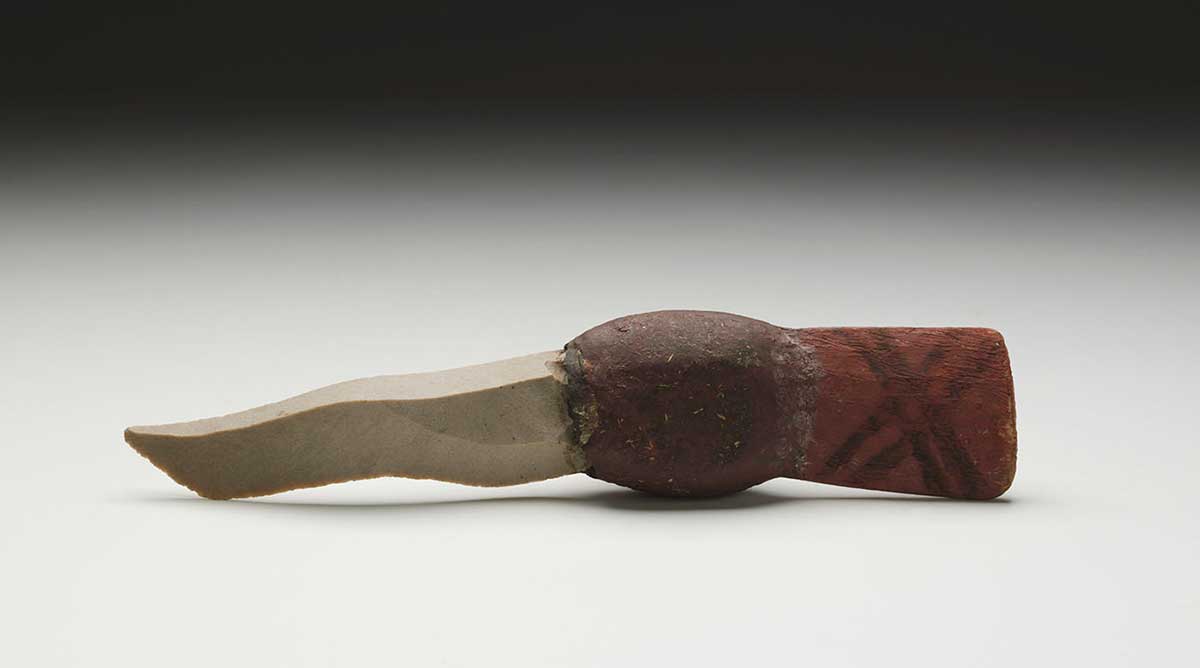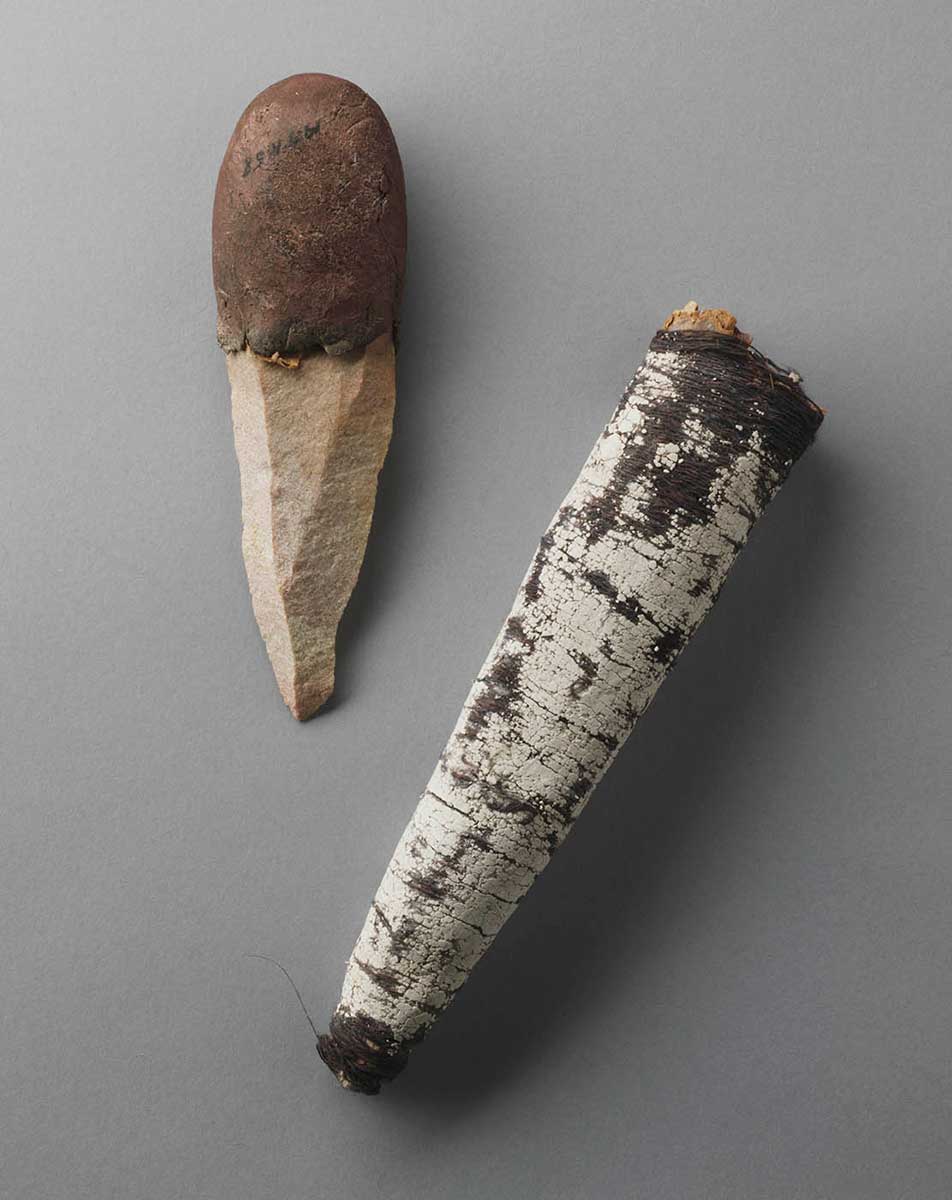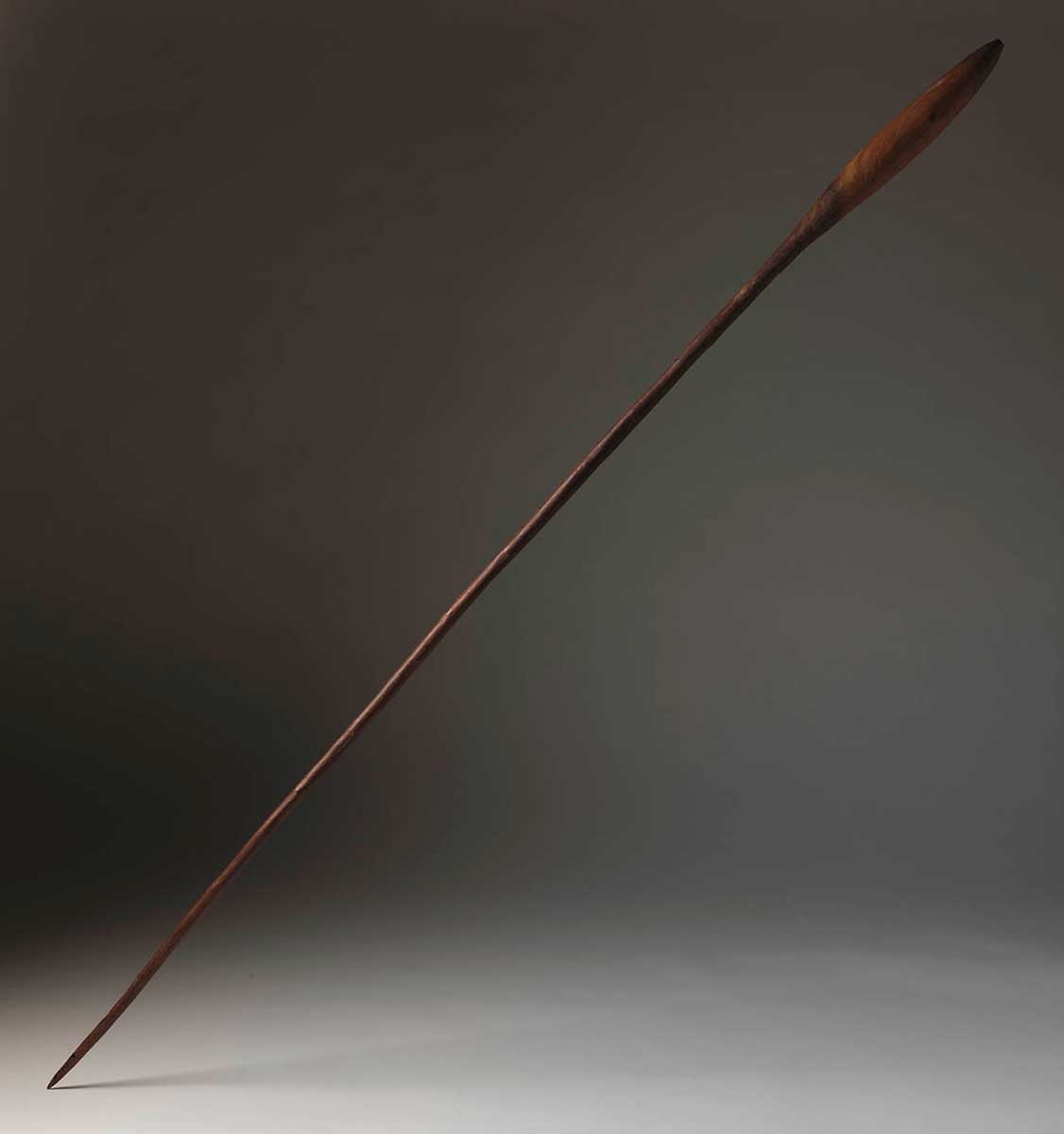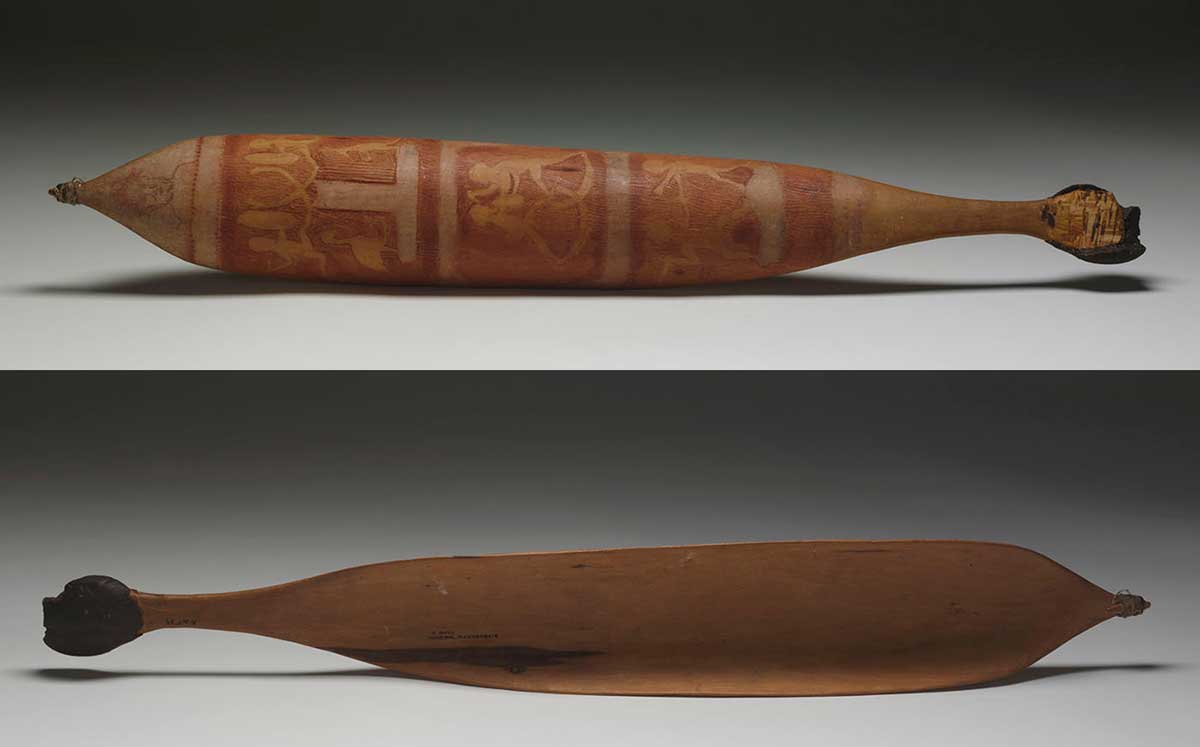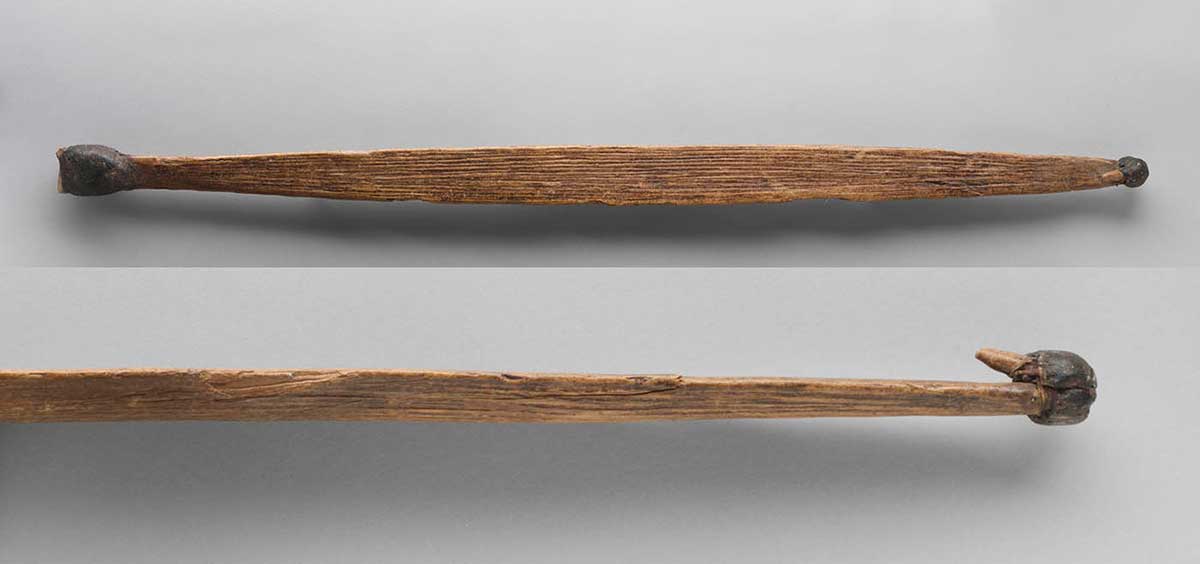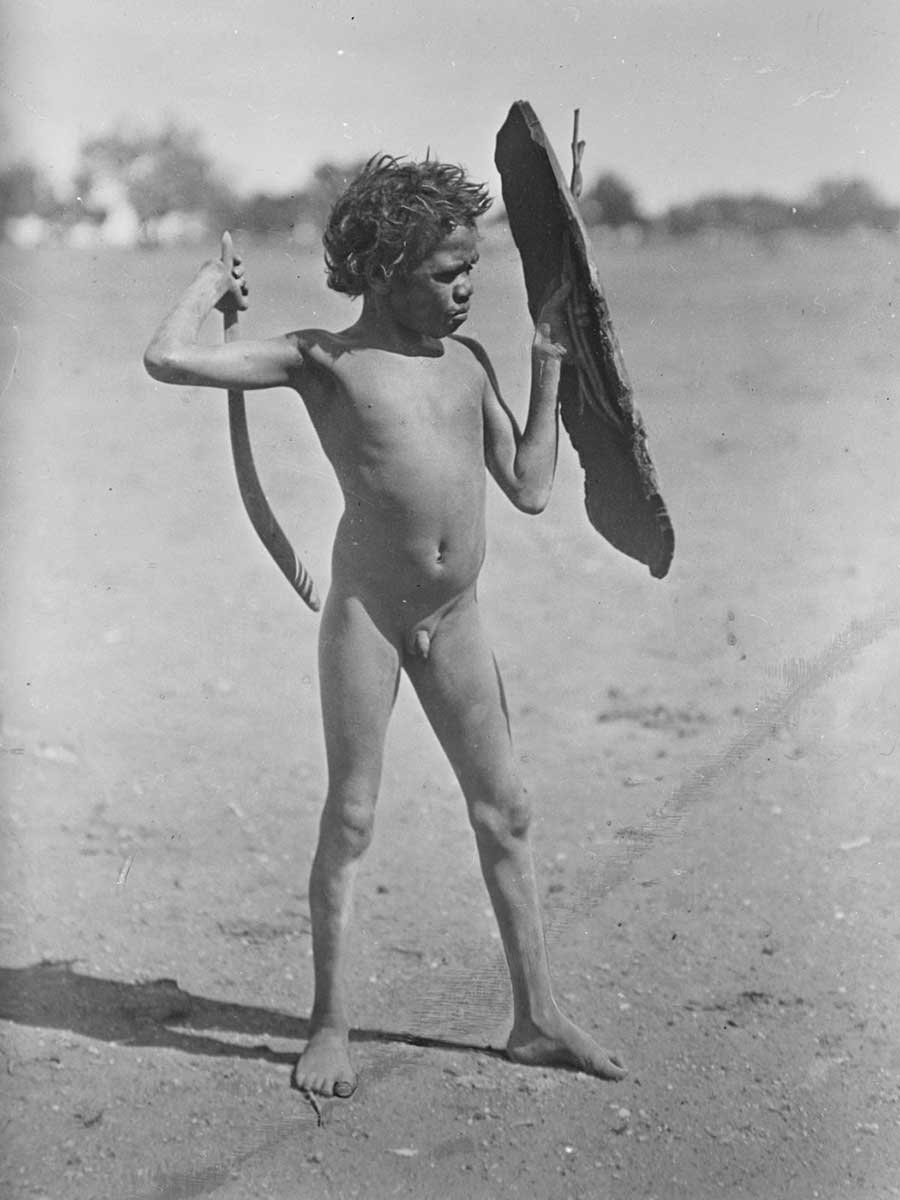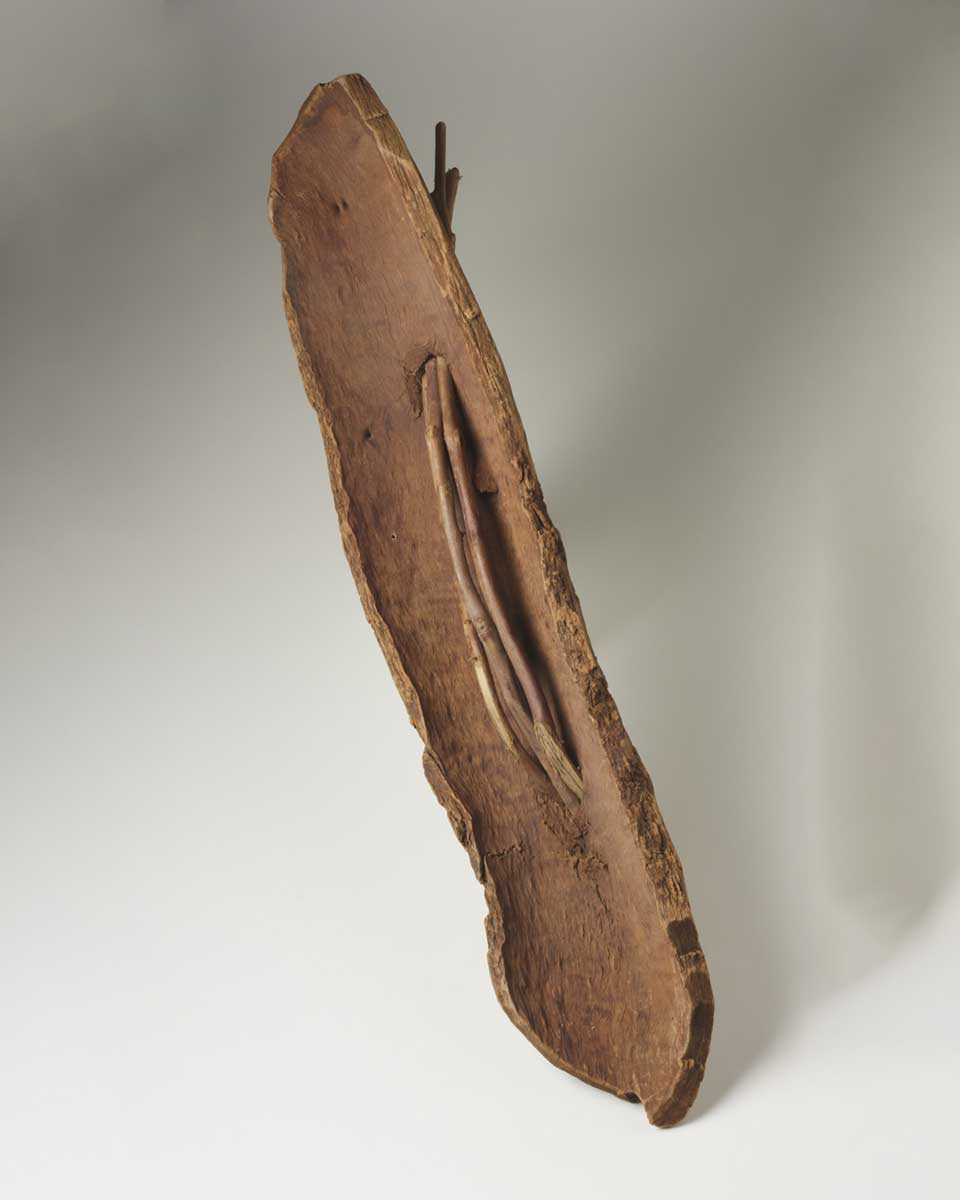Herbert Basedow was a prolific collector of Aboriginal artefacts as well as geological, plant and animal specimens.
Rather than attempting to make a systematic collection of each type of Aboriginal artefact made and used in the areas where he travelled, Basedow appears to have acquired objects opportunistically.
Records show that some were given to him as gifts, while others were exchanged for tobacco and other commodities.
A number of artefacts also reveal Basedow's interest in Aboriginal art. One example is a decorated spear-thrower, probably acquired by Basedow in 1913 while the maker, Erlikilyika or Jimmy Kite, a Lower Southern Arrernte man from near Charlotte Waters, was in Adelaide.
View the map of Australia outlining Basedow’s expedition trails
- Download Basedow map70.8 kb pdf [ PDF | 70.8 kb ]
Aboriginal boys practised their hunting and fighting skills using toy weapons. Usually these were less well-made than adult counterparts. In this case the toy is made from bark with a handle of sticks rather than one piece of wood. Basedow gives a detailed description of how this object was made in his book The Australian Aboriginal (1925, pp 86–87):
As a means of self-defence and protection against such throwing-sticks and the small toy-spears previously mentioned, the Arunndta construct for their boys light bark shields. A piece of green bark is cut out of the butt of a eucalyptus, oblong-oval in shape and about two feet long and six inches wide [610 x 152 mm]. Two holes are cut in the central line of this piece, about six inches [152 mm] from either end, and through them two or three fairly stout, green twigs are stuck, from the under, concave surface, to form a handle. The points of these twigs stick out from the top surface, some two inches [51 mm], but they are left to prevent the ends of the handle from slipping out. The bark is then bent in the required shield-shape and dried over a slow fire or in hot ashes.
